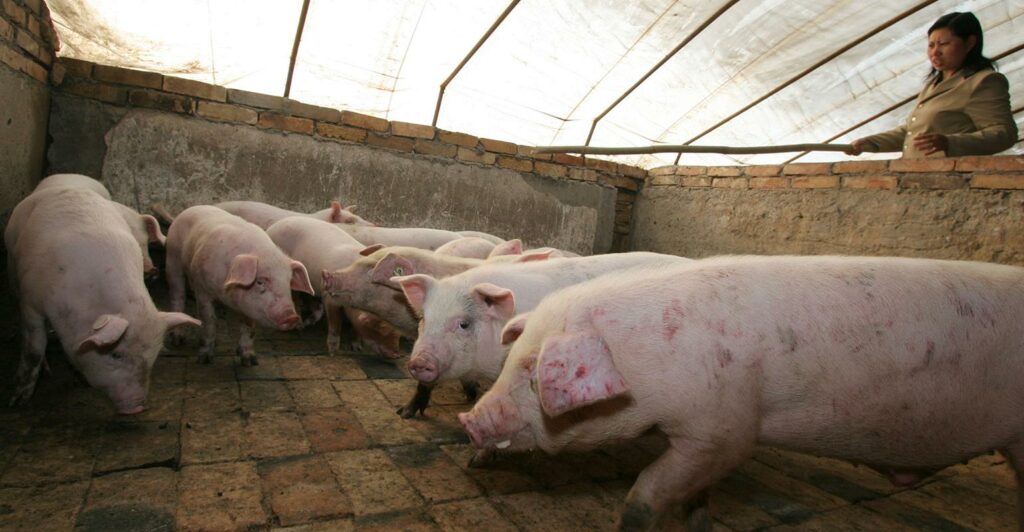With the number of positive cases from COVID-19 still growing, a group of Chinese researchers has discovered a new type of swine flu that can infect humans and has the potential to cause a future pandemic. But the virus doesn’t pose an immediate global health threat.

The virus, known as “G4 EA H1N1”, is genetically descended from the H1N1 swine flu that caused a pandemic in 2009. G4 shows “all the essential hallmarks of a candidate pandemic virus,” said the authors of the study. Nevertheless, Angela Rasmussen, a virologist at Columbia University, warned the public not to “freak out.”
“Our understanding of what is a potential pandemic influenza strain is limited” she posted on Twitter. “Sure, this virus meets a lot of the basic criteria but it’s not for sure going to cause a hypothetical 2020 flu pandemic, or even be a dominant strain in humans.”
On Tuesday, Dr. Anthony Fauci, White House coronavirus advisor, said that the G4 virus shares characteristics of the 2009 H1N1 virus and 1918 pandemic flu.
“In other words, when you get a brand new virus that turns out to be a pandemic virus it’s either due to mutations and/or the reassortment or exchanges of genes,” he told lawmakers. “And they’re seeing virus in swine, in pigs now, that have characteristics of the 2009 H1N1, of the original 1918, which many of our flu viruses have remnants of that in it, as well as segments from other hosts, like swine.”
Researchers from Shandong Agricultural University and the Chinese National Influenza Center discovered the virus as part of a pig surveillance program from 2011 to 2018. They collected more than 30,000 nasal swabs from pigs in slaughterhouses and veterinary teaching hospitals across 10 Chinese provinces.
They identified 179 swine influenza viruses from the samples, but not all represented a concern. Some only showed up one year or eventually declined to nonthreatening levels. But that wasn’t the case of the G4 virus, which kept showing up year after year, and even increasingly after 2016.
Additional tests indicated that the G4 virus can infect humans by binding to our cells and receptors, and it can replicate quickly inside our airway cells. And though G4 holds H1N1 genes, people who have received seasonal flu vaccines won’t have any immunity.
The G4 virus already appears to have infected humans in China, the researchers indicated. In Hebei and Shandong provinces, both places with high pig numbers, more than 10% of swine workers on pig farms and 4.4% of the general population tested positive in a survey from 2016 to 2018.
There is no evidence yet that G4 could spread from person to person, which perhaps is the most promising sign so far, said Carl Bergstrom, a professor of biology at the University of Washington. “This is not a new virus; it’s been very common in pigs since 2016,” he tweeted. “There’s no evidence that G4 is circulating in humans.”
Nevertheless, the researchers warned in the study that the virus was on the rise among pig populations, and could “pose a serious threat to human health” if not carefully monitored. Transmission of the virus from pig to human could “lead to severe infection and even death,” said the study, which called for greater control of the virus’ spread within pig populations.
Back in 2009, the H1N1 swine flu pandemic killed an estimated 151,700 to 575,400 people globally. In the aftermath, authorities and scientists stepped up surveillance of pig populations to watch for viruses with “pandemic potential.”
“Pig farming is a massive industry in China and pigs can be important hosts from which novel influenza viruses may emerge,” James Wood, Head of Veterinary Medicine at the University of Cambridge, told CNN. He said the study was a “salutary reminder that we are constantly at risk of a new emergence of zoonotic pathogens and that farmed animals, with which humans have greater contact than with wildlife, may act as the source for important pandemic viruses.”
The new study comes as the world still deals with the COVID-19 pandemic, which has now infected more than 10.3 million people globally and caused more than 505,000 deaths, according to data from Johns Hopkins University.
“It’s something that still is in the stage of examination,” Fauci said, referring to the dangers of G4. It’s not “an immediate threat where you’re seeing infections, but it’s something we need to keep our eye on, just the way we did in 2009 with the emergence of the swine flu.”
The study was published in the journal PNAS.
Was this helpful?



